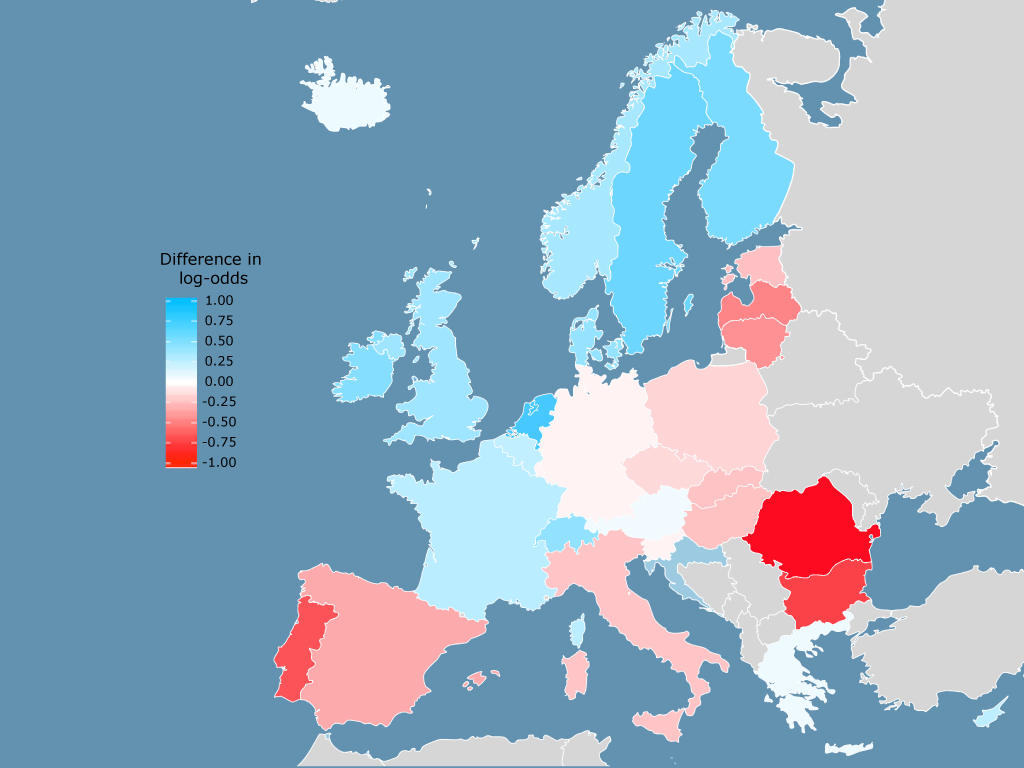Fertility in Europe is characterised by sizeable contrasts between countries. These differences are not due to different levels of childlessness, but rather caused by variation in second (and third) birth rates. Opportunities and constraints that influence decisions about family size are closely linked to educational attainment. Recent evidence suggests that the behaviour of women with high education may even be related to overall fertility levels: In countries with relatively high transitions to second births, the total fertility rates tend to be higher. This implies that more knowledge about educational differentials can contribute to the understanding of diversity in fertility in contemporary Europe.
The relationship between education and second births
Previous research has shown considerable variation in the relationship between women’s educational attainment and second births: A negative association is found in some countries, while a positive or non-negative relationship is reported in others. However, existing studies come mainly from single-country perspectives, which makes it difficult to compare the results. In this recent study, Martin Klesment, Allan Puur, Leen Rahnu, and Luule Sakkeus contribute to the literature by comparing the association between women’s and their partners’ educational attainment, and the transition to second births in regions and sub-regions of Europe. The data used was collected in the 2005 and 2011 waves of the EU Statistics on Income and Living Conditions (EU-SILC).
Results indicate that second-birth rates tend to be higher in Northern and Western Europe. Lower second-birth rates are found in Southern and Eastern Europe (Figure 1). This pattern fits the delineation between areas with moderate and more pronounced sub-replacement fertility.

Figure 1: Country-level differences in second birth risks. Note: Random intercept prediction from multilevel logisti regression model of transition to second birth.Source: EU-SILC 2005 and 2011 data, own estimation.
Different results in every region
The relationship between educational attainment and second births also varies, not only by individual country, but by larger geographical area in Europe. These variations extend to male partners, although smaller in scale than among women. Northern Europe shows a positive association between education and having a second child, with highly educated women having significantly elevated odds of second births relative to their counterparts with a medium and low level of education. Western Europe features a positive relationship among male partners, but demonstrates a U-shaped pattern among women. This pattern occurs due to German-speaking countries where women’s educational attainment appears inversely related to second births. A negative relationship between women’s education and second childbearing prevails in Eastern and Southern Europe.
Perhaps one of the most intriguing results of this study is that in the Central Eastern and South Eastern sub-regions of Eastern Europe a partners’ high education does not make a significant difference in the odds of having a second child. By contrast, it is rather their low educational attainment that tends to be associated with elevated second-birth rates in these two areas. Thus, the findings suggest that the association between male partners’ education and second childbearing are also not uniform throughout Europe.
Important conclusions
Some important conclusions can be drawn from this study. First, it demonstrates that there is a systematic variation in the educational gradient of second childbearing by major regions and sub-regions. This variation closely follows the patterns of relatively moderate and more pronounced sub-replacement fertility that has consolidated in Europe over the past few decades. Second, the behaviour of highly educated women seems to be decisive for a region‘s level of second-order and overall fertility. In areas where university-educated women have lower second-birth rates than women with medium and low education, fertility tends to be lower. The mechanism of opportunity costs suggests that the observed variation in educational gradient may be due to contextual features such as institutional support for combining employment, career and parenthood, as well as gender equity.
This PopDigest is also available in French, Spanish and German.

*This PopDigest has received funding from the European Union's Seventh Framework Programme (FP7/2007-2013) under grant agreement n° 320116 for the research project FamiliesAndSocieties.
FamiliesAndSocieties (www.familiesandsocieties.eu) has the aim to investigate the diversity of family forms, relationships and life courses in Europe, to assess the compatibility of existing policies with these changes, and to contribute to evidence-based policy-making. The consortium brings together 25 leading universities and research institutes in 15 European countries and three transnational civil society organizations.